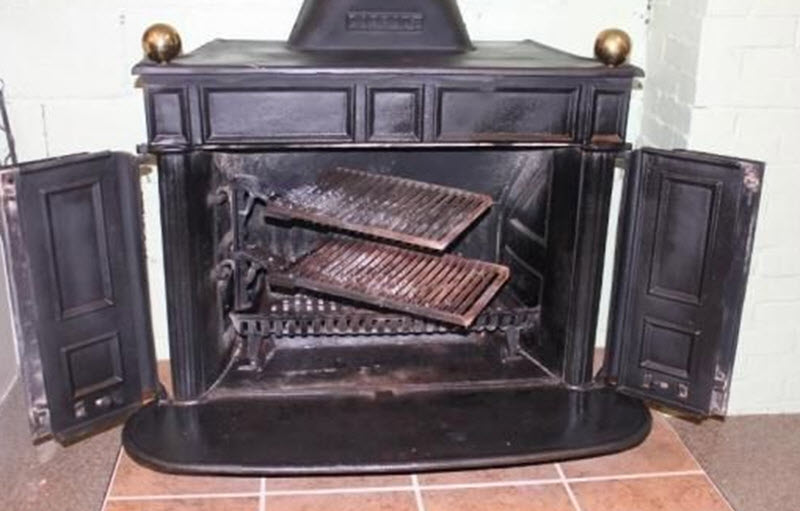Franklin Stove: Rediscovering Benjamin Franklin’s Invention
The Franklin stove, one of the remarkable inventions of Benjamin Franklin, revolutionized the way people heated their homes in the 18th century. Developed during a particularly harsh winter, this innovative fireplace design aimed to improve efficiency, allowing for greater warmth while using less wood. Joyce Chaplin, a historian and expert on Franklin, explores this lesser-known invention in her latest book, showcasing its significance in environmental history and climate adaptation. Beyond its practical benefits, the Franklin stove also played a role in enhancing understanding of atmospheric phenomena, which has permeated the discourse around technology and human comfort. This fascinating combination of history, science, and invention continues to resonate in today’s climate discussions, making the Franklin stove a pivotal element of Franklin’s legacy in promoting a more sustainable future.
Often referred to as Franklin’s innovative fireplace, the Franklin stove represents a landmark in early American ingenuity. As we delve into the legacy of this significant creation, we recognize its impact not only on domestic heating practices but also on broader discussions surrounding environmental change. The concept of improving energy efficiency can be traced back to Franklin’s vision, which highlights the intersection of technological advancement and climate adaptation. Joyce Chaplin shines a light on this period, offering insights into how Franklin’s work can inform contemporary environmental challenges. This inventive heating solution remains a testimony to the relevance of historical inventions in addressing today’s pressing issues of atmospheric science and sustainability.
Unveiling the Franklin Stove: A Climate Adaptation
The Franklin stove, a creation of Benjamin Franklin during the harsh winter of 1740 to 1741, emerged as a significant climate adaptation for the colonists facing severe cold and fuel scarcity. Joyce Chaplin’s exploration highlights how this remarkable invention was designed to enhance indoor warmth while utilizing less wood, a precious resource at the time. By allowing families to generate heat more efficiently, the Franklin stove not only catered to immediate comfort but also addressed the environmental concern of deforestation caused by increasing settlements. Franklin’s innovation reflected a practical response to climate challenges, transforming ordinary fireplaces into efficient heating systems.
Franklin’s design principles were revolutionary as they incorporated the science of convection—an idea that would later influence our understanding of atmospheric phenomena. By analyzing how heated air rises and retains warmth, he devised a stove that could warm a room layer by layer. This not only improved the quality of life for countless households but also sparked discussions about how technology could be used to mitigate climate impacts. As we face unprecedented climate issues today, the Franklin stove serves as an example of how early American inventors like Franklin sought to innovate solutions that resonated with their environmental realities.
The Intersection of Invention and Environmental History
Joyce Chaplin’s study of Benjamin Franklin reveals a deep intersection between his inventions and the environmental history of his time. Franklin’s contributions were not limited to technological advancements; they were also rooted in a profound awareness of the natural world and its challenges. His pragmatic approach to science echoed throughout his life as he sought to understand atmospheric phenomena and their implications. The evolution of the Franklin stove is thus a testament to how ingenuity can rise from necessity amidst climatic adversity, shedding light on the broader narrative of American environmental history.
Moreover, the stove represents a pivotal moment in the 18th century when science began to morph into a practical tool for everyday living. Franklin’s observations about atmospheric effects, particularly his insights into the Gulf Stream, married imagery of indoor warmth with a recognition of larger environmental systems. This blending of domestic invention with scientific inquiry marks Franklin not simply as an inventor but as an early environmental thinker who anticipated the need for sustainable living practices—long before such terminology became commonplace in modern discussions about climate adaptation.
A Scientific Gateway: Franklin’s Contributions to Atmospheric Understanding
The Franklin stove served as more than just a heating device—it acted as a gateway for exploring atmospheric science. Franklin was one of the first to conceptualize the relationship between air temperature and movement, an understanding essential for explaining various weather patterns. Chaplin underscores that Franklin amazed his contemporaries by applying his findings about heating and convection to larger atmospheric phenomena, including storm systems along the Atlantic coast. In doing so, he helped lay the groundwork for future meteorological studies, illustrating a profound synergy between everyday household technology and the scientific exploration of the natural world.
This innovative overlap made the sciences more approachable for the general public as Franklin articulated complex theories through relatable analogies tied to his inventions. His ability to demystify atmospheric dynamics using concepts derived from his stove exemplifies the 18th-century Enlightenment ethos, which sought to empower individuals with knowledge. By bridging domestic technology and scientific inquiry, Franklin transformed perceptions of environmental science, fostering a cultural appreciation for understanding climate not just as a backdrop to life, but as an intricate system worthy of study and respect.
Franklin’s Legacy: Inventions and Ethical Considerations
While Benjamin Franklin’s legacy is often celebrated for his inventive genius, Joyce Chaplin’s book highlights the complexities of his relationship with issues such as slavery and environmental justice. Intrigued by the economic benefits Franklin derived from his inventions—including the Franklin stove—Chaplin reveals how the Pennsylvania iron industry employed enslaved individuals, uncovering the less savory aspects of his success. This exploration invites a reexamination of the ethical dimensions surrounding technological progress, demanding a nuanced understanding of how scientific advancements often emerged alongside significant social injustices.
Examining Franklin’s legacy prompts reflections on contemporary technological innovation. As we grapple with climate change today, it is crucial to consider not only the efficacy of our inventions but also the broader implications of their development. Can modern inventions provide equitable benefits for all, or do they exacerbate existing inequalities? In the context of environmental history, Franklin’s narrative serves as a reminder that innovation must be pursued alongside social responsibility, ensuring that the quest for climate solutions is inclusive and just.
Drawing Inspiration from Franklin’s Ingenious Solutions
In today’s context of climate adaptation, Benjamin Franklin’s innovative spirit remains a beacon of inspiration. His practical approach to problem-solving illustrates the importance of resilience and adaptability in the face of environmental challenges. The Franklin stove, rooted in necessity during a particularly brutal winter, underscores a key lesson for modern society: that innovation can and should arise from a deep understanding of our environmental context. As we seek solutions for today’s climate crisis, Franklin’s legacy encourages a proactive stance in developing technologies that harmonize with natural systems.
Furthermore, as we face unprecedented atmospheric shifts, Franklin’s philosophy of marrying science with everyday utility calls on contemporary inventors and thinkers to rethink their approaches. Just as Franklin endeavored to capture the dynamics of air through the design of his stove, modern engineers and scientists must strive to embrace multifaceted solutions to mitigate emissions and promote sustainability. In doing so, we honor Franklin’s legacy and take up the mantle of responsible innovation, essential for addressing the complex environmental issues of our time.
The Franklin Stove and Its Impact on Comfort and Health
The comfort provided by the Franklin stove goes beyond mere warmth; it represents a significant shift in societal well-being. By improving heating efficiency, Franklin’s design also implicitly contributed to better indoor air quality compared to traditional fireplaces that emitted more smoke. Chaplin notes how Franklin’s innovations came from a desire to see people take charge of their comfort in a time when accessing fuel was unpredictable. This health-focused aspect of invention resonates with contemporary audiences grappling with the effects of pollution and climate change. The legacy of the Franklin stove serves as an early example of how technology can enhance quality of life while also grappling with environmental impacts.
The understanding Franklin brought to the conversation of indoor climate health helped shape societal expectations of comfort. His insistence on reducing emissions reflected a growing awareness of air quality issues—an awareness that is starkly relevant today as we combat urban pollution and the health risks associated with climate change. Thus, we recognize that Franklin’s innovations were not isolated endeavors; they were intricately linked to his larger vision of a healthier society, marking him as a pioneer in both comfort and environmental health.
Exploring Atmospheric Phenomena through Franklin’s Lens
Franklin’s keen interest in atmospheric phenomena resulted in groundbreaking insights that still influence climate science today. His scientific contributions, particularly through the lens of understanding convection and storm patterns, created foundational knowledge about how temperature variations affect weather systems. Chaplin emphasizes Franklin’s foresight in associating indoor heating with outdoor climatic conditions. His efforts to scientifically articulate these connections mirrored the Enlightenment ideals, fostering a sense of collective responsibility toward understanding and adapting to the climate.
By using relatable analogies drawn from the workings of the Franklin stove, he made complex atmospheric principles accessible to the public. This ability to translate scientific concepts into everyday language not only educated his contemporaries but also cemented his role as an advocate for scientific literacy. As we continue to navigate challenges of climate science today, evolving Franklin’s approach—bridging innovation with education—remains vital in fostering public engagement and understanding of environmental phenomena.
Lessons from Franklin on Sustainable Energy Solutions
Joyce Chaplin’s work stresses the importance of Franklin’s insights as we navigate the modern energy landscape. Although Franklin validated coal as an energy source during his lifetime, he remained vigilant about the emissions produced. His reflections serve as an early warning about the environmental costs associated with energy consumption. Franklin’s endeavors encourage us to think critically about our choices in energy use and to aim for solutions that balance efficiency with sustainability. Just as he questioned the status quo, today’s innovators must tread carefully to avoid repeating historical mistakes.
As we strive for sustainable energy solutions, Franklin’s legacy reminds us that no single strategy will suffice to combat the multifaceted nature of climate change. Emphasizing the necessity for collaborative approaches, the Franklin stove illustrates that a combination of multiple technologies and innovations will be essential in addressing our current environmental crises. We are encouraged to tap into the spirit of inquiry and exploration that defined Franklin’s inventions, seeking diverse solutions that address both the immediate and long-term challenges of climate adaptation.
Revitalizing Historical Perspectives on Environmental Change
The exploration of Benjamin Franklin’s life and inventions through Joyce Chaplin’s lens offers a revitalized perspective on historical environmental change. Franklin’s experiences with the Little Ice Age illuminated for him the pressing need for inventive solutions to climate challenges—a lifeboat for those navigating the extremes of weather. This historical context is pertinent today as we reflect on how society has historically responded to climate variability. The Franklin stove symbolizes human ingenuity as a response to environmental extremes, advocating for a proactive stance in today’s context of climate uncertainty.
By connecting Franklin’s inventions to contemporary climate adaptation, we better understand the continuity of human resilience and innovation. Chaplin’s insights invite readers to reflect on how lessons from the past can illuminate pathways forward. Honoring Franklin’s contributions means recognizing our obligation to learn from historical responses to climate change, ultimately fostering a legacy of respect and responsibility towards our natural environment.
Frequently Asked Questions
What is the significance of the Franklin stove in Benjamin Franklin’s inventions?
The Franklin stove is one of Benjamin Franklin’s key inventions that showcases his innovative thinking. Developed during the severe winter of 1740-1741, this stove was designed for improved heat efficiency, allowing colonists to burn less wood while achieving greater warmth, highlighting Franklin’s contributions to technology and climate adaptation.
How did the Franklin stove contribute to understanding atmospheric phenomena?
The design of the Franklin stove was based on the principle of convection, which Franklin also applied to explain atmospheric phenomena. He articulated how heat moves through the air, which laid the groundwork for future studies of weather patterns and helped deepen our understanding of systems like the Gulf Stream.
In what ways did the Franklin stove address environmental concerns of the 18th century?
During a time of deforestation and increasing fuel costs, the Franklin stove addressed environmental concerns by maximizing heat output and minimizing wood consumption. This climate adaptation aimed to make homes warmer while reducing dependence on firewood, demonstrating Franklin’s awareness of environmental history and the relationship between technology and sustainability.
What are some of the technological advancements made with the Franklin stove?
The Franklin stove saw several iterations over the years, evolving from using wood to coal as fuel. Each version improved upon the last, focusing on increasing heating efficiency and reducing emissions, thus showcasing Franklin’s forward-thinking approach to technology and environmental impact.
How did Franklin’s design philosophy of the stove reflect Enlightenment ideals?
Franklin’s work on the stove embodied Enlightenment ideals by representing the belief that science and technology could improve human comfort and adapt to environmental challenges. His approach to making homes warmer and more efficient during harsh winters was an expression of confidence in using knowledge to enhance quality of life.
What lessons can modern society learn from the design of the Franklin stove?
The development of the Franklin stove teaches us the importance of innovation in addressing climate challenges. Franklin’s efforts highlighted that solving environmental issues requires continuous improvements and a multifaceted approach rather than relying on a single, quick solution.
How did the Franklin stove impact energy consumption in the colonies?
The Franklin stove impacted energy consumption by allowing users to burn less fuel while achieving better heating. This efficiency was particularly important in the colonies where firewood was becoming scarce, reflecting Franklin’s understanding of both technological needs and environmental sustainability.
What role did the Franklin stove play in advancing Franklin’s scientific career?
The invention of the Franklin stove played a crucial role in advancing Franklin’s scientific career by demonstrating his ability to blend practical invention with scientific principles. It not only improved domestic warmth but also illustrated how scientific thinking could provide solutions to pressing societal needs regarding climate and comfort.
| Key Points |
|---|
| Benjamin Franklin’s invention, the Franklin stove, was a climate adaptation developed during the harsh winter of 1740-41 to improve heating efficiency. |
| The stove utilized a design that burned less wood yet produced more heat compared to ordinary fireplaces, marking a significant innovation in technology. |
| Franklin’s stove was not only about heating; it contributed to the understanding of atmospheric phenomena, including storm movement and the Gulf Stream. |
| Joyce Chaplin’s book, “The Franklin Stove: An Unintended American Revolution,” emphasizes the stove’s role in shaping new ideas about weather and technology. |
| Franklin’s efforts also addressed environmental concerns by aiming to minimize smoke emissions and improve air quality. |
| The stove exemplifies the ethos of 18th-century inventors who believed in using science and technology to improve human conditions, even in the face of climate challenges. |
Summary
The Franklin stove stands as a testament to Benjamin Franklin’s innovative spirit and his deep understanding of science and technology. Designed during one of the coldest winters in history, the Franklin stove not only provided an efficient heating solution but also revealed insights about atmospheric science that were groundbreaking for its time. Joyce Chaplin’s exploration of this invention sheds light on its significant impact, highlighting how it catalyzed new thoughts about weather, comfort, and the environment. In today’s context, the legacy of the Franklin stove inspires a cautious optimism in our pursuit of sustainable solutions, emphasizing that true progress requires a multi-faceted approach in addressing both technological and environmental challenges.



